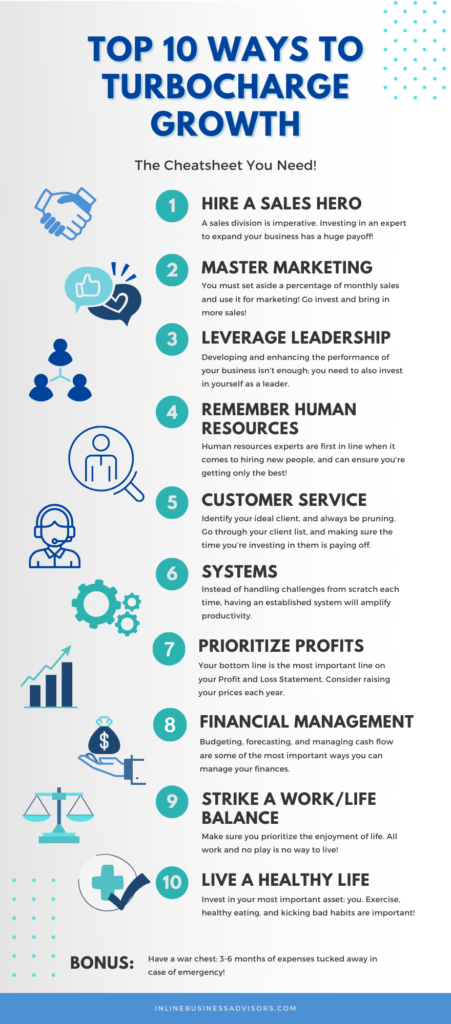Wrong choices don’t ruin your business, but staying stuck in them will. Every founder, CEO, or scrappy solopreneur has faced a moment they’d rather forget. A failed product launch. A misaligned hire. A costly expansion. A hasty partnership sealed with nothing more than blind optimism and a handshake. When those decisions come back to haunt you, the question becomes how to bounce back from a bad business move without derailing your vision, your confidence, or your momentum.
This is not just about damage control. It is about rebuilding smarter, leading better, and moving forward with clarity.
You’re not alone. Mistakes are part of the job description. What defines your leadership is not the error. It’s what you do next. Only after you’ve done the work to recover, reposition, and rebuild will you come out wiser and stronger than before.
If you’re ready to turn things around, these steps will help you do it with intention and impact.
1. Recognize When You’re in the Wrong Room
Before you can bounce back from a bad business move, you need to admit that you’re stuck. That sounds obvious until it isn’t.
Smart leaders stay in bad deals longer than they should because they’re attached to the sunk cost, the optics, or the fear of admitting failure. A job title. An investor. A product that flopped. The temptation is to double down. But the wrong room doesn’t get better with time. It just dims your potential.
Here is the first rule: If your gut has been whispering for months and your metrics have been yelling, you’re not in the right room. You’re not going to find your next breakthrough by repainting the walls of a failing strategy.
Picture a small branding studio that expanded into full-service creative. The founder assumed that adding more services would increase revenue and client retention. Instead, the team became overwhelmed. Budgets grew tighter, timelines dragged, and the original joy of brand strategy was buried under project bloat and misaligned expectations. Cases like this one are common, and they reflect a familiar pattern. A well-intentioned move creates slow-drip burnout and declining profit.
Look at the major areas of your business: client fit, offers, team structure, delivery model, pricing, and time management. Rate your clarity and satisfaction in each on a scale from one to ten. Anything below a seven deserves your attention. If you would not choose the same setup today, it is worth asking why you are still committed to it.
2. Separate the Failure from Your Identity
There is a difference between making a poor decision and deciding that you are a poor leader. One is a misstep in strategy. The other is a narrative that will quietly drain your confidence and slow your recovery.
Imagine a founder who launches a digital product based on what they wanted to teach, not what their audience needed. The offer flops, then they interpret the result as a sign they are not cut out for this. The real issue here wasn’t capability. It was unvalidated assumptions and unclear positioning.
The ability to bounce back from a bad business move hinges on your capacity to examine mistakes without internalizing them.
What do you do to recover? Write a brief breakdown of the decision. Include what you assumed, what inputs you used, and what the outcome was. Then ask yourself: What part of this was avoidable? What was missing? What would I do differently now? Let this be a record of insight, not a journal of regret.

3. Audit the Damage Honestly (Not Emotionally)
When something goes wrong in business, leaders often default to either panic or minimization. Neither will help you recover with clarity.
Imagine implementing a new pricing structure that backfires. Clients start to leave, and your revenue dips. You might try to rationalize the churn or swing to the other extreme and question your entire business model. A more grounded approach would be to step back and conduct a precise review.
The aftermath of a bad decision can feel dramatic, but your job is to study it with objectivity, not emotion.
To bounce back from this, create a simple framework to assess the impact. Start with three columns:
- What was lost
- What can be recovered
- What you are learning
Then build your response around the facts. Clear data creates stronger decisions. It also keeps your next move rooted in reality, not reaction.
4. Own the Narrative Before Someone Else Does
One of the most overlooked parts of bouncing back from a bad business move is communication. Not just what you tell yourself, but what you tell your team, your customers, your audience, and anyone watching your brand evolve.
Silence can seem strategic, but it usually creates confusion. And when people do not hear from you, they tend to fill in the blanks. That is rarely in your favor.
Imagine a business coach who quietly shutters his membership program because it failed to meet expectations. If he says nothing, she risks losing trust. But if he opens up about the experience, shares the numbers, explains what she learned, and outlines what is next, his transparency becomes a strength. This mirrors what many entrepreneurs have seen. Owning the narrative earns respect and restores clarity.
To get ahead of the narrative, prepare a communication brief that outlines the decision, the reasoning, and the next step. Keep the tone grounded and forward-facing. Use a simple structure: here is what we tried, here is what happened, here is what we are doing differently and why it matters. Share this version of the story with the people who count on your leadership.
5. Make the Pivot Before You Feel Ready
Most leaders wait too long to change direction. They tell themselves they need more data, more clarity, more courage. But the longer you hesitate, the harder the exit becomes.
You do not need to be fully prepared to make the next move. You just need to be in motion. When momentum returns, confidence follows.
Picture a consultant whose calendar is built entirely around high-ticket one-on-one work. One major retainer falls through, and instead of scrambling to replace it, she quickly repurposes her client framework into a group workshop. She sends it to her list, tests the concept, and sells out the pilot. This illustrates how agility, not perfection, drives recovery.
To assess if you’re just about ready for a pivot, identify the decision you have been avoiding. Write down one small test you can run in the next 30 days. You are not rebuilding the business overnight. You are validating the next move in real time.
6. Rebuild Your Confidence with Small Wins
A wrong decision does more than affect your bottom line. It can shake your sense of judgment. If you are not careful, it becomes harder to trust your instincts, which makes future decisions slower and more cautious.
That is why small wins matter so much. They rebuild your internal evidence. You are not just telling yourself you can recover. You are proving it, one decision at a time.
Imagine a founder who exits a failed partnership. He does not immediately launch a new offer. Instead, he spends a week speaking with past clients. From those conversations, he identifies a single service worth testing and secures a few paid pilot sessions. The income is modest, but the clarity is significant. This reflects what many leaders have done to get their confidence back on track.
To rebuild your own confidence, create a short-term challenge. For one week, take one intentional step each day. Reach out to a lead, write something, make a decision, test an idea. Keep a visible list. Track your progress in terms of movement, not magnitude.
This bespoke guidance is more than directional—it’s about conserving your most precious commodity: time. Time is irrevocable, making its efficient use crucial. Expert coaching ensures every decision and action aligns with your business objectives, making your efforts purposeful and productive. Engaging a coach shifts focus from just avoiding mistakes to enhancing every aspect of your business efforts. This understanding is key in the debate between free advice and expert business coaching. It underscores the value of advisory services that prevent pitfalls and align actions with goals, strategically guiding business growth.

7. Upgrade the System That Let It Happen
After a bad move, most people focus on cleaning up the outcome. But the real leverage lies in changing the system that allowed it in the first place.
The decision itself deserves scrutiny, but the process behind it often reveals more. Missed signals, unchecked assumptions, and weak decision filters tend to create the conditions for failure. Looking at how the choice was made is often more valuable than focusing on the outcome alone.
You also need to examine how it happened. Were there assumptions that went untested? Did early signals get ignored or misinterpreted? Could a blind spot in your process have let it through?
Imagine an agency that repeatedly takes on low-margin clients who drain the team. They try setting firmer boundaries, but it does not fix the issue. The better move would be to redesign the intake system: add a qualification scorecard, a time estimate calculator, and a revenue projection for every new client. Most repeat mistakes are not character flaws, but process gaps.
Think of your last misstep as a system failure. Document the steps that led to it. Then reverse-engineer a new process. What checks, filters, or questions would have changed the outcome? Build those in before your next big decision.
8. Share the Story as a Leader, Not a Victim
Once you are on the other side of a mistake, you have something powerful. Not just a lesson, but a story. One that can position you as a thoughtful, experienced leader rather than someone who simply recovered in private.
The difference lies in how you frame it. When you speak about your own missteps from a place of reflection and strength, you give others permission to learn through you. Your vulnerability becomes valuable.
Picture an entrepreneur who built an app that failed to launch. Instead of walking away in silence, he repackages the journey as a workshop on product validation. He explains what went wrong, what she learned, and how others can avoid the same pitfalls. That story becomes his positioning. Many founders have found their most compelling insights by owning what did not work.
Identify one lesson from your experience that others need. Turn it into something useful. This could be a blog post, a podcast interview, a slide deck, or a conversation with your team. The goal is not to perform the story. It is to lead with it.

Final Thought: You Are Allowed to Grow
To bounce back from a bad business move, you do not need to explain away the past. Decide that it no longer defines you.
You are not meant to stay in decisions that no longer fit. You are not obligated to keep showing up for strategies that stop working. And you are not weak for changing course. You are leading.
The people who grow in business are not the ones who always get it right. They are the ones who know how to step out of the wrong room, take the lesson, and move forward with clearer eyes.
Mistakes do not define you. Staying stuck in them does.

Larry Vivola is a successful business coach who coaches entrepreneurs anywhere in the world via Zoom. If he’s not coaching he’s making meatballs and entertaining friends and family!
P.S. Whenever you’re ready, there are 3 ways I can help you:
#1: Business Growth – If you’re a business owner, I will help you make more money and enjoy more leisure time. Together, we will get you the freedom you deserve! Click here to book a 15 minute discovery call!
#2: Become a Coach – If you’re a coach or an expert-at-anything, I will help you build an online, dream six-figure coaching business! Click here to book a 15 minute discovery call!
#3: If you want to watch my daily business and life truths videos. Click here!

